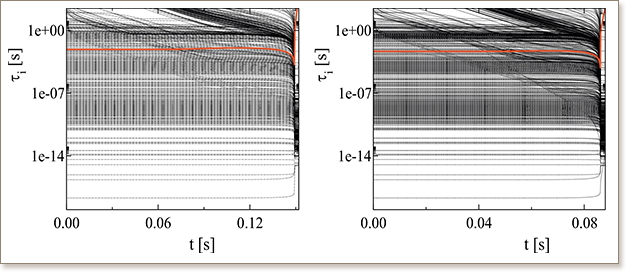Chemical kinetic insights into the ignition dynamics of n-hexane


Normal alkanes constitute a significant fraction of transportation fuels, and are the primary drivers of ignition processes in gasoline and diesel fuels. Low temperature ignition of n-alkanes is driven by a complex sequence of oxidation reactions, for which detailed mechanisms are still being developed. The current study explores the dynamics of low-temperature ignition of n-hexane/air mixtures, and identifies chemical pathways that characterize the combustion process. Two chemical kinetic mechanisms were selected as a comparative study in order to better understand the role of specific reaction sequences in ignition dynamics: one mechanism including a new third sequential O2 addition reaction pathways (recently proposed by Wang et al. 2017), while the other without (Zhang et al. 2015). The analysis is conducted by applying tools generated from the computational singular perturbation (CSP) approach to two distinct ignition phenomena: constant volume and compression ignition. In both cases, the role of the third sequential O2 addition reactions proves to be significant, although it is found to be much more pronounced in the constant volume cases compared to the HCCI. In particular, in the constant volume ignition case, reactions present in the third sequential O2 addition reaction pathways (e.g., KDHP → products + OH) contribute significantly to the explosivity of the mixture; when accounted for along with reactions P(OOH)2 + O2 → OOP(OOH)2 and OOP(OOH)2 → KDHP + OH, they decrease ignition delay time of the mixture by up to 40%. Under HCCI conditions, in the first-stage ignition, the third-O2 addition reactions contribute to the process, although their role decays with time and becomes negligible at the end of the first stage. The second ignition stage is dominated almost exclusively by hydrogen-related chemistry.
DOI: 10.1016/j.combustflame.2017.09.024

"KAUST shall be a beacon for peace, hope and reconciliation, and shall serve the people of the Kingdom and the world."
King Abdullah bin Abdulaziz Al Saud, 1924 – 2015
Thuwal 23955-6900, Kingdom of Saudi Arabia
© King Abdullah University of Science and Technology. All rights reserved